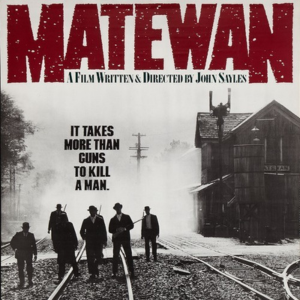The Monocle Movie Man
By Laura Gerhaeusser
Once upon a time, there was a Monocle Man. His hair was neatly slicked back, his eyebrows always formed a determined line and he looked through a monocle to see the story in everything – a helpful tool as he was a filmmaker. In 1927, he made a movie showing a futuristic dystopia – a world where machines have mostly taken over humans, a city made up of sky-high buildings and pollution streaming out of every street. Believe it or not, at the time it was an utter flop! But over the years, this film, Metropolis, went on to become an unmatched piece of cinema history. This article will offer an insight into Fritz Lang aka The Monocle Man, and his journey from war hero to movie hero extraordinaire.
The man itself is known as Fritz Lang – the Austrian-German director, whose name is directly associated with revolutionary filming techniques, legendary movies and a stereotypical German character.
After having studied civil engineering for a short time, his interest in the arts started to arise as a young man. At first, painters like Gustav Klimt and Egon Schiele peaked his interest. So much so, that he went on to start painting himself. Inspired by his travels to Africa, Asia and the South Seas, he accumulated a body of work that he then exhibition in Paris in 1914.
With the start of World War I, Lang was conscripted into the army. After being wounded four times and losing sight in his right eye, he spent a year in the army hospital to recover. It was during that time, he started to write down ideas for screenplays.
In 1919, he got the chance to direct his first movie Halbblut (The Half-Caste), a dark tale about the relationship between a German man and his peculiar lover Juanitta. At the time of its release, the silent movie was highly critically acclaimed but all footage has since gone lost.
Lang befriended producer Erich Pommer, who worked for UFA, Germany’s biggest filmmaking company at the time. During this time Fritz Lang directed films, that went on to become classics of the Weimarer Republic’s era: Destiny (1921) is an Expressionist fantasy romance.
In 1922, he married the writer Thea von Harabou, whom he met while working at UFA two years earlier. They went on to work together as well, as Thea went on to write all of the scripts for his upcoming films.
One of them is the cinematic epic Lang produced in 1922: Dr. Mabuse, The Gambler. Four and a half hours of suspension filled intrigues and a protagonist who is constantly changing his persona. This film can be seen as Lang’s breakthrough, as it’s unmatched in its tempo of action, aesthetic, and insistently storytelling. It follows Dr. Mabuse, a mastermind and man of various dark talents: hypnosis, mind control and disguise. He oversees all intrigues and gambling of Berlin’s underworld in the Weimar years. It’s a unique portrait of the dissolution Germany was facing at the end of World War I.
After this monumental production, he visited the United States for the first time in 1924. He was interested to see the filming techniques they were using in New York City and Hollywood.
The sum of all of this newfound oversea inspiration ultimately led to Metropolis. He worked on it for almost two years and spent most of UFA’s financial resources, in order to get the picture to perfection.
As the silent movie era came to an end and more and more filmmakers went on to make use of the new ability to cut sound and screen together, Fritz Lang took the challenge for this new generation of film. In 1931, he released M – a disturbing story of a child murderer in Berlin. The movie is still highly acclaimed today and was Lang’s personal favorite of his entire filmography.
In 1933, the sequel to the previous Dr. Mabuse came out: The Testament of Dr. Mabuse, which is an anti-nazi statement and thus was banned by German authorities. Lang could feel the tumultuous and dangerous times ahead in Germany. Thea sympathized with the new government and joined the NSDAP. This came to a shock to Fritz, as he was part Jewish. They got divorced and he eventually emigrated to the US.
After a few box-office failures, his first well-received film, made on American grounds, was You Only Live Once in 1937. He joined Twentieth Century Fox and got involved in a variety of projects, such as westerns, novel adaptations and thrilling dramas like Man Hunt ( 1941).
The film noir style in the 40’s was hugely influenced by early German Expressionist films, so naturally Lang became a master of it. Full of pessimism, dark themes and explorations of the humans’ ability to show his mysterious and dangerous side.
After successfully directing movies throughout the 1940s and 1950s, things slowed down for Mr. Lang. His age started to show and as the film industry started to shift again, his style and vision had a hard time catching up with the times.
It was then when he met Artur Brauner – a filmmaker, who had been admiring Lang’s ability to showcase stories for a long time. Brauner was working on a remake of Dr. Mabuse’s Testament, when Lang suggested to add a completely new third part to the story – The Thousand Eyes Of Dr. Mabuse. The story finds that diabolical Weimar name resurfacing in the Cold War era, linked to a new methodology of murder and mayhem.


With this being the very last of Fritz Lang’s films, the story he began creating forty years earlier, his comes to a definite statement and full-circle moment.

Eureka wants to celebrate this milestone of cinema history by releasing a special edition Blu-Ray, including the original German soundtrack. an audio commentary and a collector’s booklet with Lang’s notes. It will be available on 11th May.
Dive into cinematic excellence and enjoy this masterpiece in the comfort of your own home.
Should you have enjoyed the Monocle Film Man – Insight into the Great German Filmmaker Fritz Lang, why not read another exciting film article of ours? Filmed To Remember discusses two outstanding films about the Holocaust, Historias de la Frontera shows the harsh reality of the Mexican-American border.





